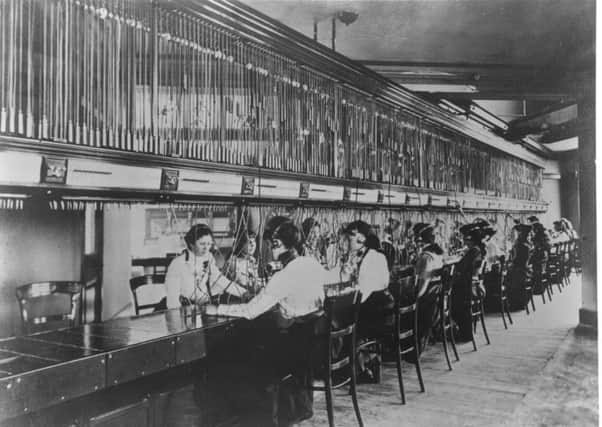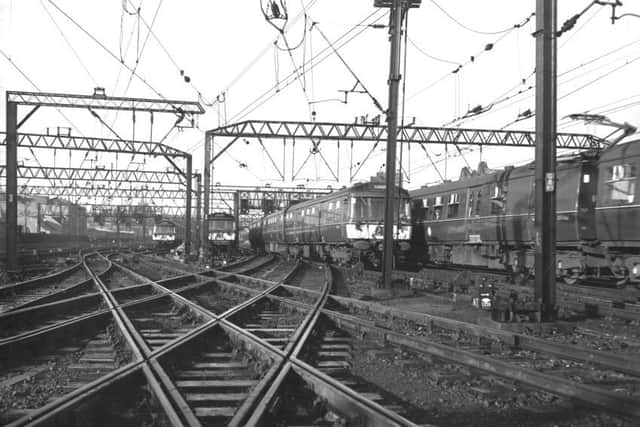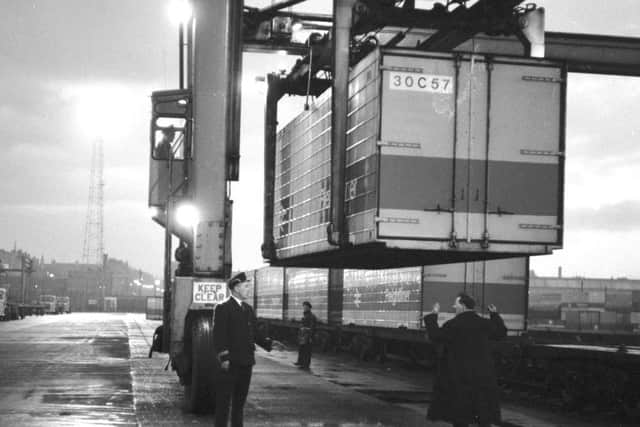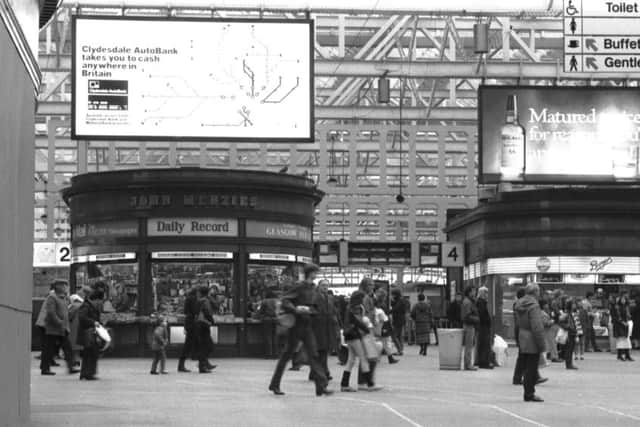Looking back: Glasgow Central Station


Since it opened its doors in 1879, the station has grown from eight to 15 platforms.
It’s been the site of a supposed murder and a gas explosion. It even acted as a temporary mortuary during World War One.
Advertisement
Hide AdDuring World War Two, the entire station was painted black to avoid catching the eye of the Luftwaffe - the plan worked well as the station was never hit.


But after the Blitz, the black paint proved impossible to remove.
It was only in 1998 that they finally started replacing every single pane.
Ten years after its opening, in 1890, the bridge over Argyle Street was widened to include a ninth platform.
From 1901 to 1905, the station was reconstructed by further extending the station over the Argyle Street to include 13 platforms.


The bridge over River Clyde was raised by 30in and expanded to include eight tracks.
Advertisement
Hide AdIn the 1980s, additional works were carried out on the high level station to replace the old train information office with an electro-mechanical destination board.
The station is also thought of in connection to the Great Train Robbery: an infamous mark on the station’s history, as the targeted train departed from Glasgow Central.
Advertisement
Hide AdIn 1932 Laurel and Hardy arrived at Central and were met by a crowd of 40,000 whistling the stars’ famous theme tune.


Glasgow Central is also believed to be haunted.
A desperate man who lost his fortune in the Wall Street Crash is rumoured to have killed his wife for her life insurance money in the old boiler room.
For years, station staff were too terrified to go into the grain store, where they insisted they saw a ghostly thin woman with brown hair. And just last year The Ghost Club conducted a fruitful official investigation into the station’s alleged hauntings.
The original 1889 signal box was replaced with an electro-pneumatic power-operated box based on the Westinghouse system in 1907 and it opened on 5 April 1908.


Overhead power lines began to appear on the high-level platforms early 1960s.
Plans to electrify other routes, such as the Whifflet Line, as part of a scheme to improve rail services in Scotland, was completed in November 2014.